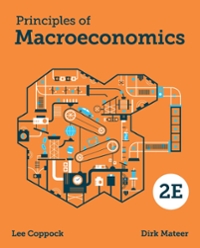:Solve all questions.
50. A savings bank has the following balance sheet ($ millions, market values). Assets Liabilities Treasuries:$200 Deposits:$900 Floating rate mortgage loans:$300 Equity:$100 Fixed rate mortgage loans:$500 Total: $1,000 Total: $1,000 Fall 2008 Page 22 of 66 Durations are as follows: Treasuries 6 months Floating rate mortgage loans 1 year Fixed rate mortgage loans 5 years Deposits 1 year (a) What is the duration of the banks equity? Briefly explain what this duration means for the banks stockholders. (b) Suppose interest rates move from 3% to 4% (flat term structure). Use duration to calculate the change in the value of the banks equity. Will the actual change be more or less than your calculated value? Explain briefly. 51. Fixed Income Management: A pension fund has the following liability: A 20-yr annuity, that will pay coupons of 7% at the end of each year. (t=1...t=20). The pension fund's liability has a face value of 100. The yield curve is flat at 5%. (a) Calculate the PV and duration of this liability. (b) The same pension fund has the following assets: a 1-yr discount bond with face value 100, and a 20-yr discount bond which also has a face value of 100. Calculate the PV and duration of the portfolio of assets. (c) How would you change the portfolio composition of assets (keeping the PV of assets the same), so that the NPV of the firm, defined as PVA - PV, that is Present Value of assets minus the Present Value of liabilities, is unaffected by interest rate changes? (d) After making the change above in (c), what is the change in the NPV of the firm if interest rates increase by 10 basis points. 52. Three bonds trade in London and pay annual coupons Bond Coupon Maturity Price 5% 100.96% 6.5% 106.29% 09 09 2% 93.84% Prices are in decimals, not 32nds. (a) What is each bond's yield to maturity? (b) What are the 1, 2 and 3-year spot rates? What are the forward rates?Consider a market where technology is characterized by a constant average and marginal cost given of $10 to the firm. The market demand curve is given by 0 =45 - 1/2 P a) Compute the total surplus under perfect competition. b) If the market is characterized by a uniform pricing monopolist, compute the deadweight loss that results when the monopolist charges the profit maximizing price. 0) If, instead, the monopolist also used an entry fee, what combination of price (per unit) and entry fee should the monopolist use to maximize profit? d) If instead, the market is characterized as a duopoiy with two identical firms selling identical products and setting prices in a simultaneous move, static game, compute the Nash equilibrium prices for the firms to charge. 3) If there are five consumers with demands identical to the market demand curve given in the original question stem, find an expression for the total willingness to pay for the society of five consumer segments as a function of the total quantity demanded in the market if the good is non-rival and non-excludable. Consider a closed economy, where wages are sticky in the short run. The consumption function is C = (:0 + :21 (Y T), where the marginal propensity to consume cl is equal to 0.4. Initially the economy is in equilibrium at Y = Y' and P = P\5) In this question, we're going to use a game tree and backward induction to analyze a Stackelberg problem. In this case, each firm has 3 options: to produce a low level of output, a medium level of output, or a high level of output. The payoffs to each firm given each firm's output choice are: (KA, KB) B: High B:Medium B: Low A: High (0,0) (75,50) (112.50, 56.25) A: Medium (50,75) (100, 100) (125, 93.75) A: Low (56.25, 112.50) (93.75, 125) (112.50, 112.50) a) What is the Nash equilibrium when both firms choose their output at the same time? Explain. You must prove that your answer satisfies the definition of Nash equilibrium. b) Now assume that firm A can choose its output first. Fill in the following game tree for this sequential game. Each of the 9 payoff combinations above corresponds to one of the 9 endpoints of the game tree. I've filled in (Med, High) to get you started. A chooses L M H B chooses L M H M H M H A M. B-H (50,75) c) Now that you've filled in the tree, use backward induction to find the equilibrium for this game. Briefly describe why your answer is different than in 6a. Figure out B's best response to each of A's possible actions. Then, pick the one of those three options that maximizes A's profit, given how B will respond.1) In this question, we're going to use a game tree and backward induction to analyze a Stackelberg problem. In this case, each firm has 3 options: to produce a low level of output, a medium level of output, or a high level of output. The payoffs to each firm given each firm's output choice are: (TA, TB) B: High B:Medium B: Low A: High (0,0) (75,50) (1 12.50, 56.25) A: Medium (50,75) (100, 100) (125, 93.75) A: Low (56.25, 112.50) (93.75, 125) (112.50, 1 12.50) a) What are the Nash equilibria when both firms choose their output at the same time? Explain. You must prove that your answer satisfies the definition of Nash equilibrium











